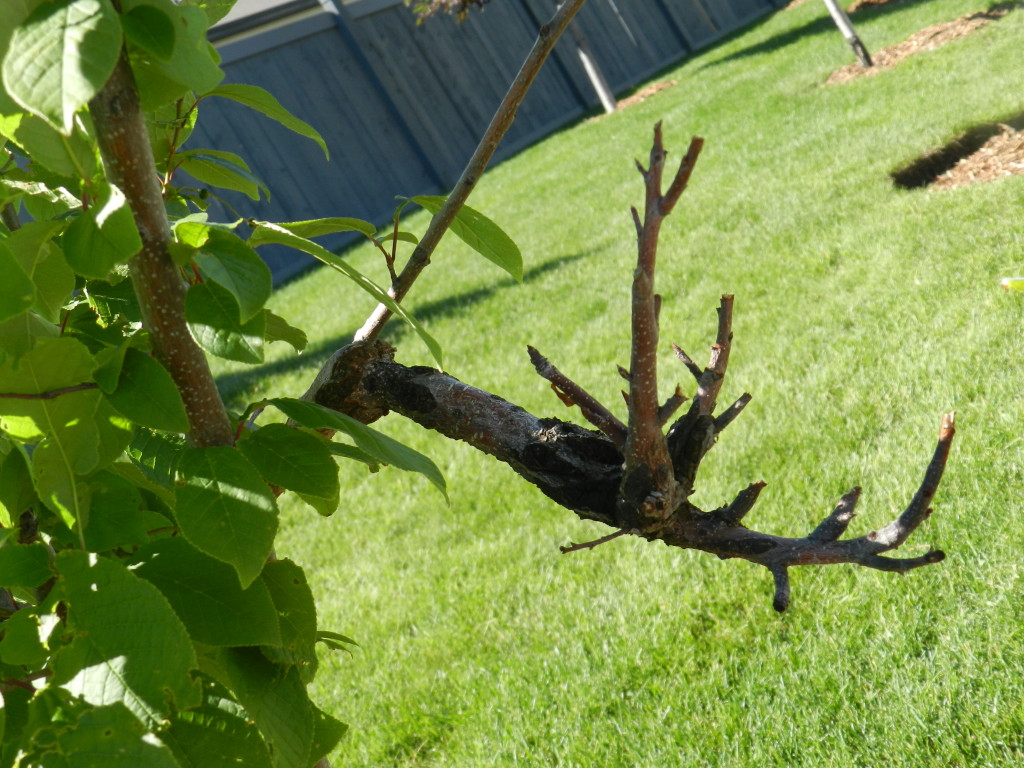 Behold, Black Knot in it’s typical form portrayed on a Schubert Choke Cherry from one of our commercial clients. Due to industry negligence many home owners and landscapers have grossly over planted the Prunus genus leading to widespread infection of this fungus. Due to the warm winters of 2016 this could be one of the worst years for Black Knot yet. Before you consider planting anything in the Prunus genus please consult an educated professional and if you already have Prunus trees such as Schubert Choke Cherry and Maydays then now is the time to inspect and treat for signs of the fungus.
Behold, Black Knot in it’s typical form portrayed on a Schubert Choke Cherry from one of our commercial clients. Due to industry negligence many home owners and landscapers have grossly over planted the Prunus genus leading to widespread infection of this fungus. Due to the warm winters of 2016 this could be one of the worst years for Black Knot yet. Before you consider planting anything in the Prunus genus please consult an educated professional and if you already have Prunus trees such as Schubert Choke Cherry and Maydays then now is the time to inspect and treat for signs of the fungus.
Inspect your trees, it generally begins on twigs, branches and fruit spurs. Trunks can also be infected. Infections usually start on young tissue. abnormal growth starts as light brown swellings that later enlarge, rupture and become black. During the second year, the growth continues to elongate along the branch and encircles it. Several knots may merge to make a large knot. In the second year the fungus in the knot dies except at the margins. The black knot is then invaded by secondary fungi that may change the color to a whitish or pinkish color. Insects frequently colonize older galls. With time and the spread of the disease, the tree loses vigor and dies
Weather dependent February – May is the most important time to inspect and treat Black Knot. However it does not stop there, when caught early the fungus can be eliminated however reinfection during this time is highly probably therefore continued attention is required throughout this period and until the following winter arrives.
The fungus must be removed, with sanitized and sharp tools. During the dormant season is most beneficial though any signs should be removed during the growing season. Make a proper pruning cut 12” – 24” inches below the infected area at the best available branch axis depending on size of infected area. Repeat inspections and treatment yearly.
